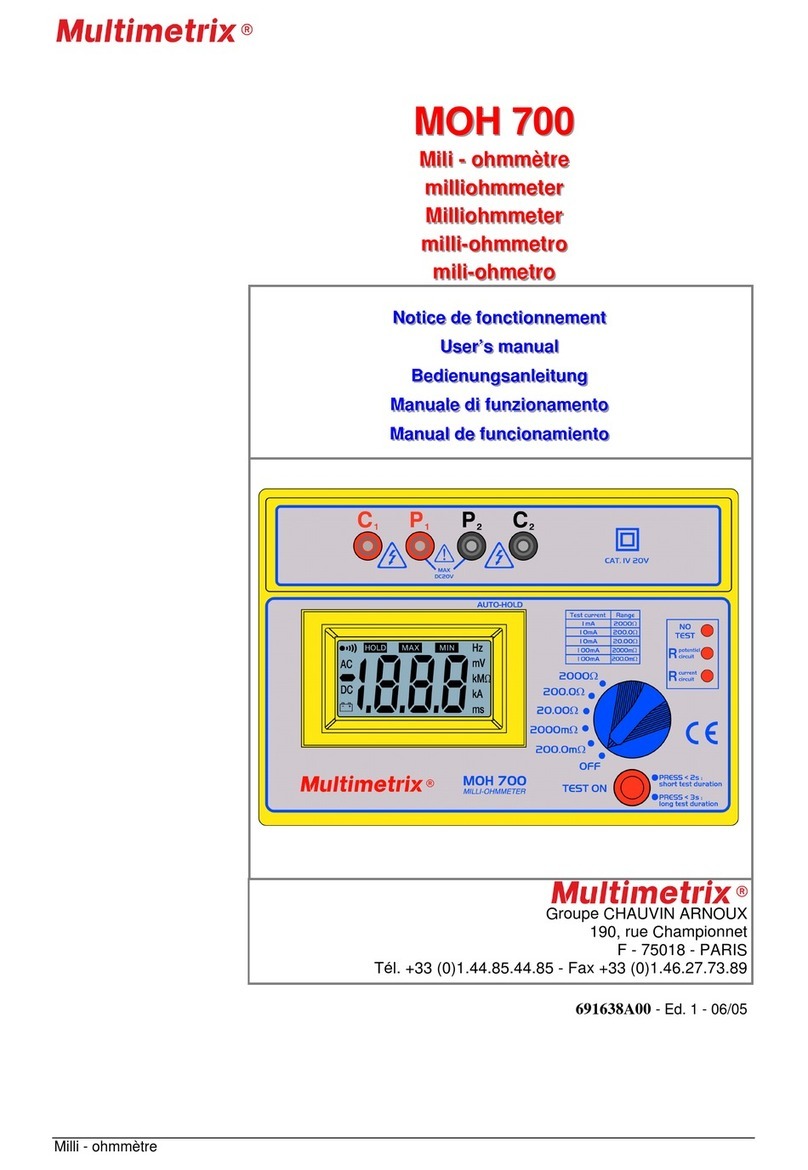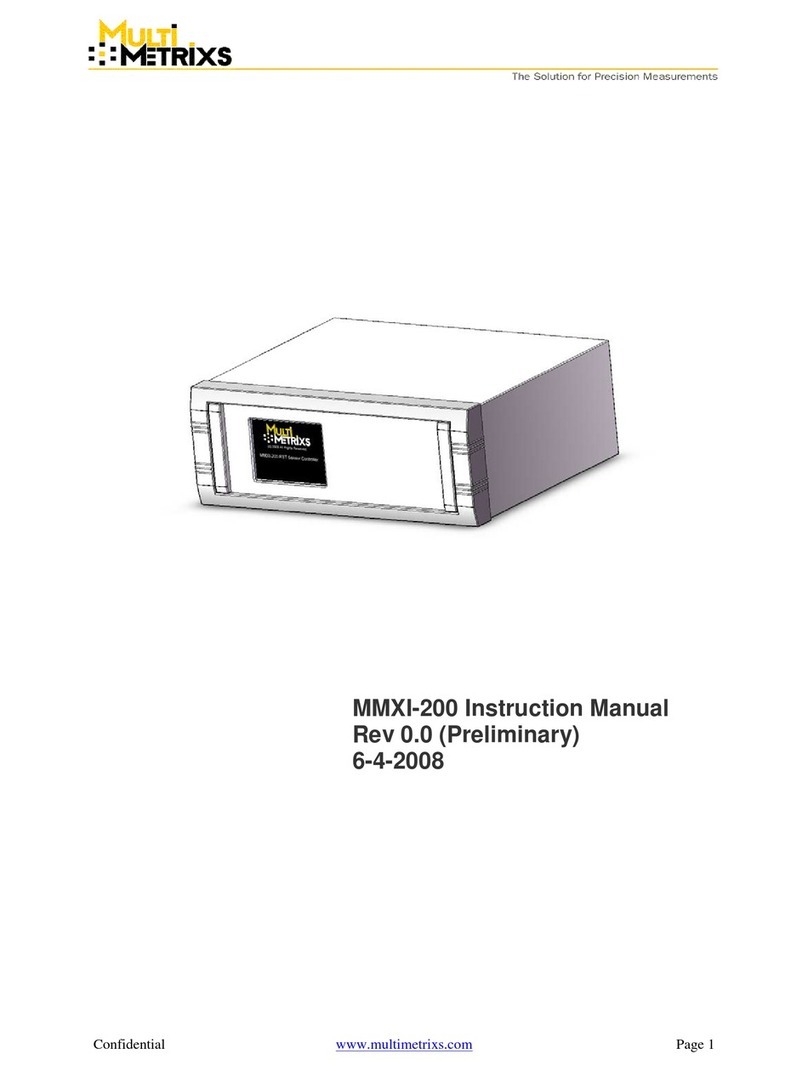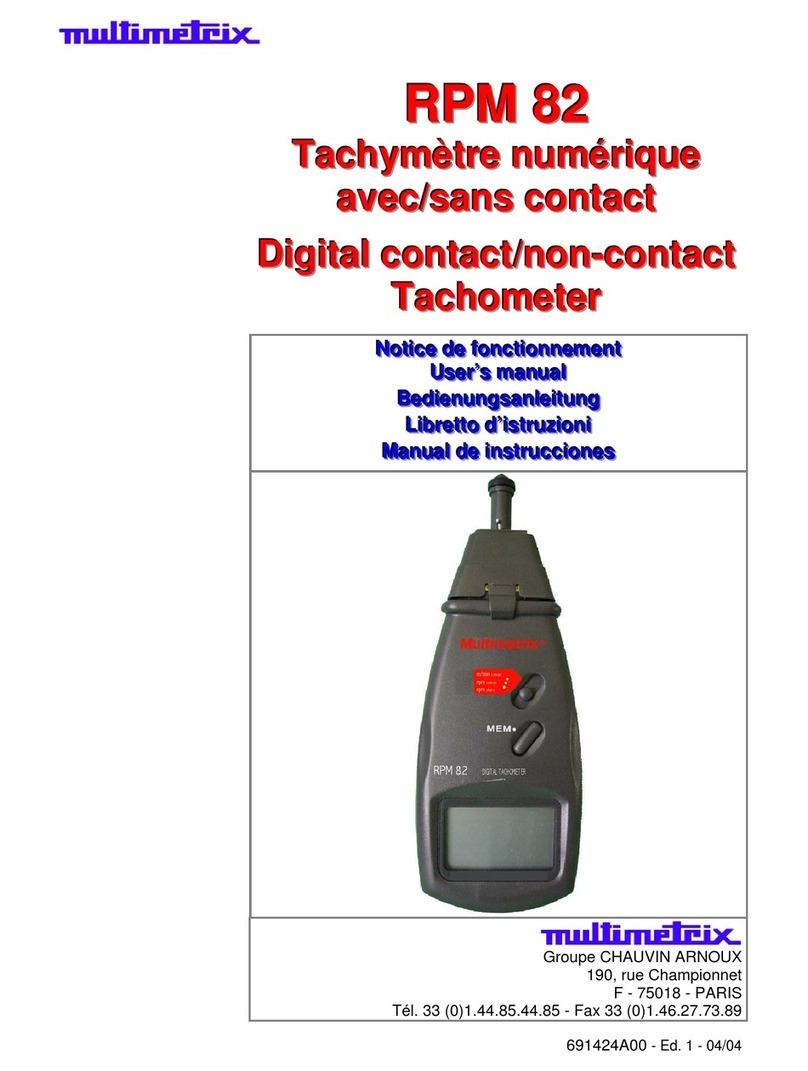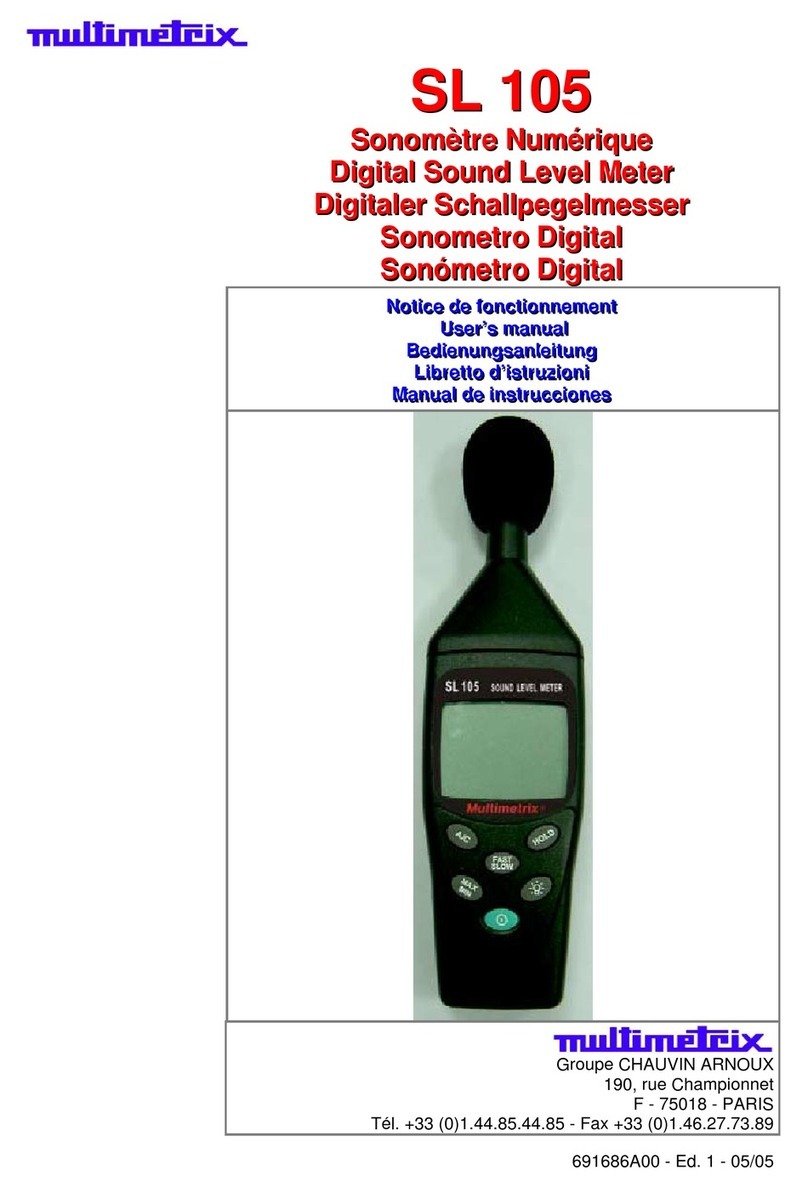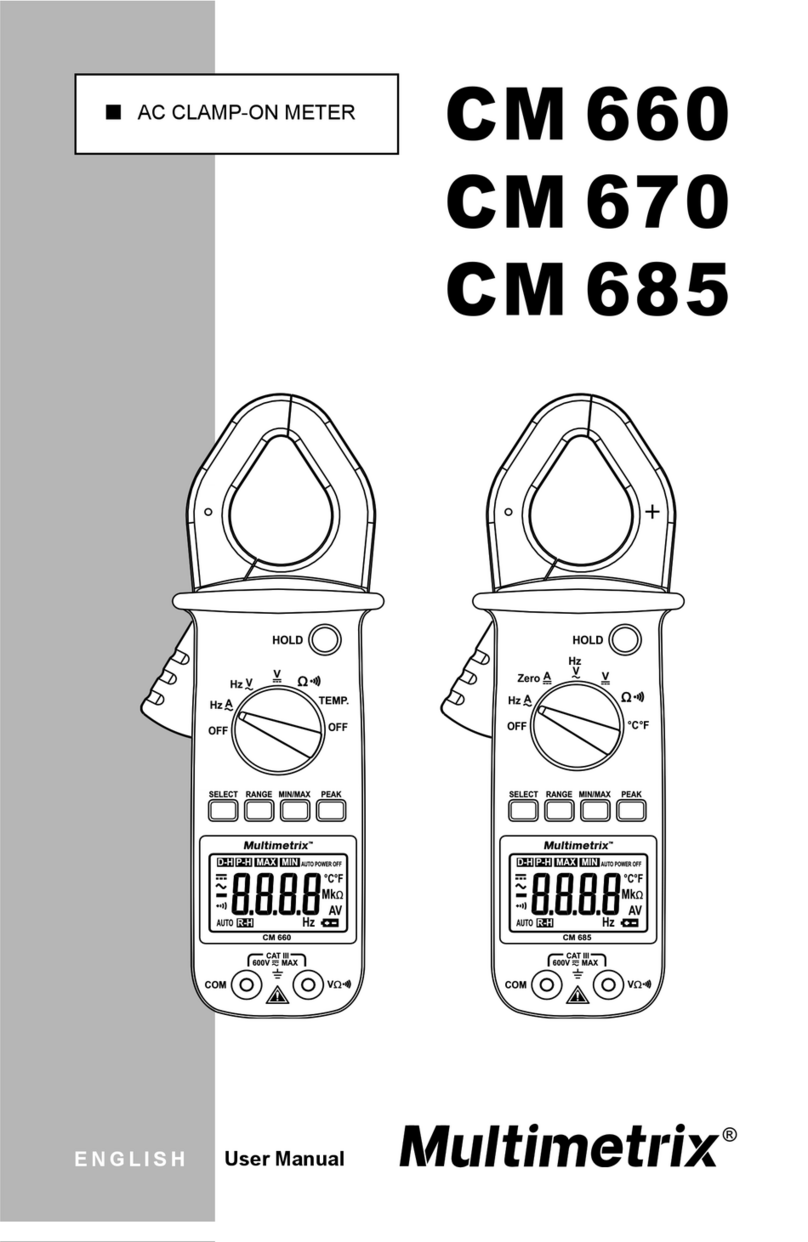
3
Les doigts ne doivent jamais dépasser la garde de la pointe
de touche.
Ne mettrez jamais les doigts en contact avec la partie
métallique de la pointe de touche.
Vérifiez la qualité mécanique et électrique des cordons et
des pointes de touche avant toute mesure. Les pointes de
touche ou cordons endommagés devront être
immédiatement changés. N’utilisez pas l’appareil en cas de
détérioration.
Ne travaillez jamais avec le boîtier arrière de l’instrument
ouvert.
Ne changez pas les piles lorsque les cordons sont
connectés.
N’utilisez pas ou n’exposez pas l’instrument au soleil, à des
températures ou un taux d’humidité élevés.
Ne modifiez jamais le circuit électronique interne.
Ne démontez pas le boîtier ; seule la trappe à piles peut être
ouverte.
Ne modifiez jamais le circuit électronique interne.
1.5 RECOMMANDATIONS DIVERSES DE SECURITE
Pour les appareils des catégories d’installation I et II, ne
travaillez jamais sur des équipements pouvant générer des
pics de tension (moteurs, etc.).
Pour la mesure en gamme manuelle, commencez toujours
par la gamme maximale. Sélectionnez ensuite la gamme la
plus appropriée.
Connectez en premier la pointe de touche noire, puis la
rouge.
Déconnectez les cordons préalablement au changement de
fonction.
Déconnectez en premier la pointe de touche rouge, puis la
noire.
Utilisez et installez les piles conformément aux instructions
de la notice spécifique au produit acheté.
Vérifiez l’absence de tension avant l’utilisation des fonctions
ou Ω.
2. GARANTIE
Ce matériel est garanti contre tout défaut de matière ou vice de
fabrication, conformément aux conditions générales de vente.
Durant la période de garantie, l'appareil ne peut être réparé que
par le constructeur, celui-ci se réservant la décision de
procéder soit à la réparation, soit à l'échange de tout ou partie
de l'appareil. En cas de retour du matériel au constructeur, le
transport allé est à la charge du client. La garantie ne
s’applique pas suite à :
Une utilisation impropre du matériel ou par association de
celui-ci avec un équipement incompatible.
Une modification du matériel sans autorisation explicite des
services techniques du constructeur.
L’intervention effectuée par une personne non agréée par le
constructeur.
L’adaptation à une application particulière, non prévue par la
définition du matériel ou par la notice de fonctionnement.
Un choc, une chute ou une inondation.
Renseignements et coordonnées de nos services après-vente :
En France Métropolitaine, sur demande au 02.31.64.51.55.
ou auprès de votre distributeur.
3. DEBALLAGE ET RE-EMBALLAGE
L’ensemble du matériel a été vérifié mécaniquement et
électrique-ment avant l’expédition.












